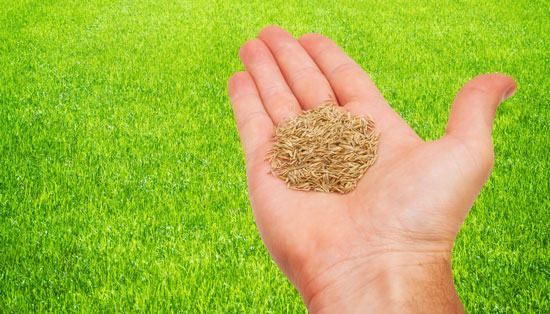| |

2020 Seed Review / 2021 Outlook
In terms of seed, 2020 was a record year for many turf seed growers in the Western US. With travel being limited (or non-existent) and vacation plans canceled, homeowners focused their time, attention, and resources (money!) on improving their lawns. Garden centers had great years and grass seed was a hot commodity. As the new crop was harvested in late Summer, prices started to drift upwards as there was very little carryover from the previous crop due to the high demand. As Fall commenced, landed costs were further strained due to severe shortages in trucking, which will continue into 2021.
As we enter 2021, seed availability is extremely tight and major grasses are already sold out until new crop is harvested in late Summer/early Fall. In other cases, some growers are holding onto what limited inventory they have with the hope prices will continue to strengthen. Perennial Ryegrass & Creeping Red Fescues have seen the largest shortages, with quality (higher weed content) a major issue. In essence, demand has been outpacing supply since Spring of 2020. With all that being said, I am happy to say that we anticipated these issues in the Fall and have locked up the majority of our needs for the coming season, while upholding our high-quality standards. With over a combined 100 years of grass seed buying and knowledge in Lisle alone, rest assured we have you covered in these challenging times.
2021 Fertilizer Outlook
Urea
Crop prices running up to multi-year highs, and the strongest farmer pre-pay for fertilizer in many years,
the demand for inputs has exploded. In the last 2 weeks Urea has traded up $60-$70+/ton and has continued to show strength. We are currently at a 3-year high. The last time we have seen prices this high was in 2014. We are now the highest priced Urea in the world and exporters are trying to line up vessels to ship to the U.S.A. The adage of "high prices cure high prices" is in full effect but will take time.
DAP
Phosphates are way up this year as well. Mosaic has petitioned the federal government for a Countervailing Duty Claim against Russia and Morocco for sending Phosphate here and subsidizing it. While we waited for a judgment all summer/fall, nobody would send DAP/ MAP to our country for fear of back charging the duty on previous ships that arrived. This created a shortage, and DAP has increased over $100/ton. They have now set the duty at +15% but will not have a final judgment until the end of March. When the final judgment is made, our market should return to normal imports with production and future pricing stabilizing.
Potash
Potash has been increasing this year as well. We hit multi year lows in the summer of 2020, and since then, have been on a steady climb as supply fell short. Producers shut down their mines this fall for
turnaround maintenance while farmers took advantage of a late all to get in the fields. Ultimately, our country ran short with producers sold out until March causing the rise in price.
These products appear to have made their move up for spring and will probably be at these current prices until we reach a more normal Supply/Demand scenario. Hopefully, that occurs sooner rather than later, but only time will tell.
2021 is the 17 year Cicada brood

In the spring of 2021, trillions of periodical cicadas are expected to emerge in parts of the following states: Delaware, Georgia, Illinois, Indiana, Kentucky, Maryland, Michigan, New Jersey, New York, North Carolina, Ohio, Pennsylvania, Tennessee, Virginia, and West Virginia. They will be a source of wonder and consternation as they emerge from the earth and lay eggs in treetops.
What are periodical cicadas?
Taxonomically, periodical cicadas are members of a large clan of insects known as Hemiptera, with piercing sucking mouthparts and gradual metamorphosis, meaning juveniles are called nymphs rather than larvae. During development, there is no pupal stage. Other familiar members of this clan and close relatives of cicadas include leafhoppers, spittle bugs and lanternflies. Periodical cicadas differ from their relatives, annual and dog-day cicadas, which appear yearly in summer and autumn throughout North America and much of the world.
By virtue of their visits in cycles of 13 or 17 years in distinct locations, periodical cicadas are unique in the animal realm. These regional, periodic visits are called broods, and there are three broods of 13-year cicadas and 12 broods of 17-year cicadas.
Michael J. Raupp, Ph.D., is professor emeritus in the Department of Entomology at the University of Maryland, College Park, Maryland.
|
 |